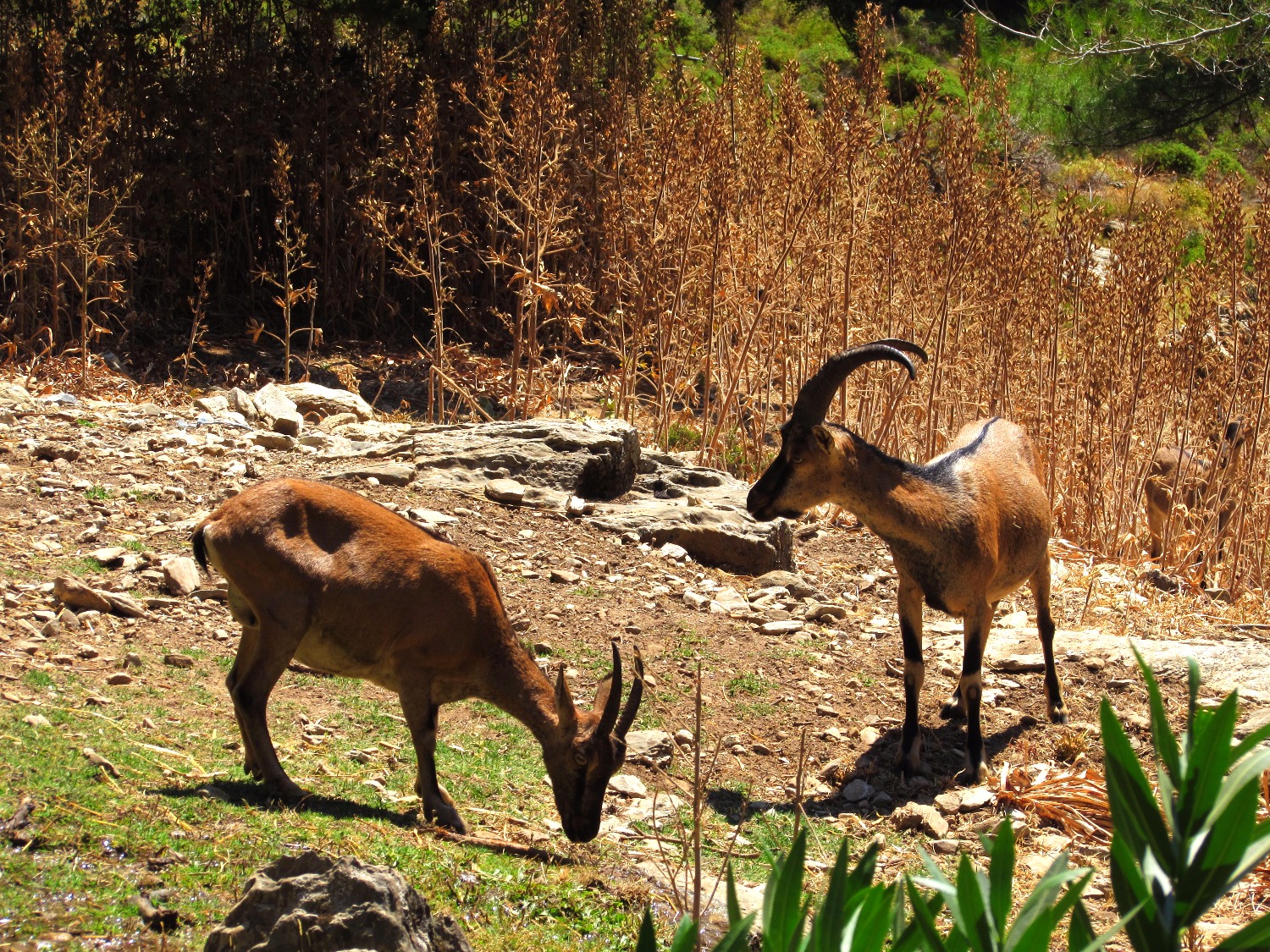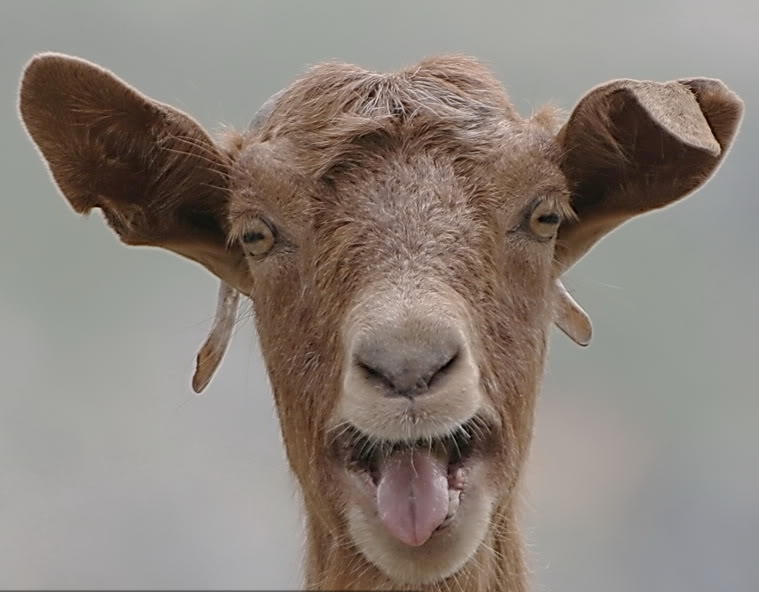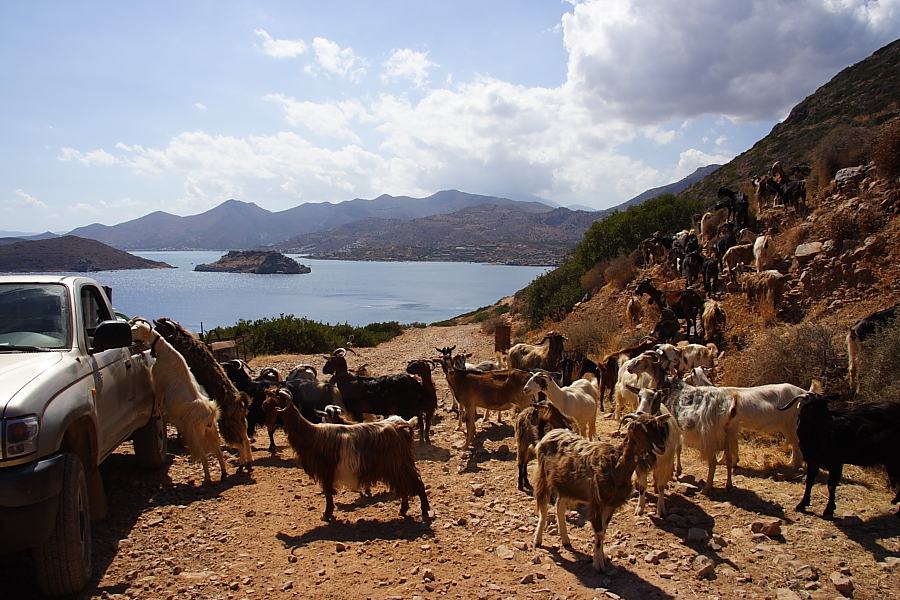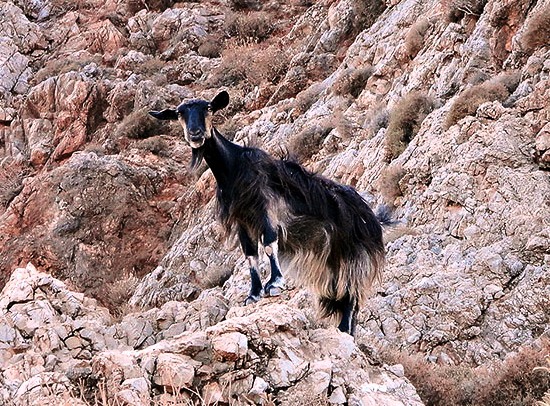Possessors of Cretan soil


Arriving on the island of Crete, you can immediately see how closely the Cretans coexist with their animals. A good half of the local population lives in villages. Naturally, they have been engaged in animal husbandry and agriculture since ancient times. Sheep and goats graze freely on the mountain slopes. They will meet you peacefully and friendly, moreover, it is they who feel that they are the full owners of this land.
There are a lot of goats in Crete, both wild and domestic. This is the second largest mammal population on the island after sheep: from more than 600,000 mammal animals there are more than 2000 kri-kri wild goats.
One the one hand, the Cretan wild mountain goat, agrimi, or simply kri-kri, is just a subspecies of an ordinary goat, whose ancestors lived in the Mediterranean region several thousand years BC. But on the other hand, any resident of Crete may be offended, if the tourist does not pay due attention to this pretty animal. After all, kri-kri have been living in Crete since the time of the mysterious Minoan civilization and at all times enjoyed incredible reverence. On the island, archaeologists have found cave paintings and murals depicting the kri-kri goat. Some scholars believe that in ancient times in Crete there was even a religious cult of this animal.

Crete is the main natural habitat of the kri-kri. The livestock here has grown steadily. A national park has been specially created in the Samaria Gorge to protect these animals. They are found on the islands closest to Crete, and on the island of St. Theodore in the Gulf of Chania, they are specially grown to replenish zoos of Europe.
Most of these goats lead a secretive lifestyle. They prefer steep, rocky slopes with shrubs alternating with small meadows. Adult males and females keep apart, forming groups and uniting only for the duration of the rut: from October to December.

The goats are pretty shy. However, for half a century, they have been under state protection: it is strictly forbidden to hunt them; therefore these animals have not looked at people with fear for a long time. Moreover, in the hope of something tasty, they often go to places, where tourists halt, to pose with their curious faces in front of the cameras. Look at the pictures—how cute they are!
Now the main problem is the preservation of the population purity. Kri-kris easily interbreed with domestic goats. Most often this happens in places of dense local communities. Here you can find goats that are completely not afraid of humans and look very similar to kri-kris.

By the way, it is no coincidence that the goat appears in one of the myths associated with Crete. It was here that the legendary goat Amalthea lived (maybe one of kri-kris?), who nurtured the baby Zeus with her milk. Her name, translated from ancient Greek, means a “gentle goddess.” Zeus’s father, Kronos, fearing for his power, swallowed all his children born. His wife Rhea suffered greatly from this. When the next child was born, she slipped Kronos instead of him a stone wrapped in swaddling clothes. Kronos swallowed the stone, suspecting nothing, and Rhea hid the baby in the island of Crete, in a cave of Mount Ida. The life of the future main god was saved by the goat Amalthea. After birth of her two kids, she had got a lot of milk to feed Zeus. Rhea hung a cradle with Zeus on a tree so that it could be found neither on earth, nor in heaven, nor in sea. So that Kronos would not hear the baby’s crying, Rhea’s servants, curetes, made a lot of noise, rattling their arms and shields. At the request of Amalthea, they entertained the boy with their dances.
Zeus was very fond of his goat-nurse. Amalthea received from Zeus a golden dog, which guarded her until his death. Zeus enabled the accidentally broken goat’s horn with the ability to deliver as much food and drink as its owner would wish. This horn entered a Greek proverb and was called the cornucopia. The goat helped Zeus even after his death. Zeus padded with her unusually strong skin (“auspice” in ancient Greek) his shield around and it became impenetrable. Under the auspice of his shield, he began the struggle with the titans. So have appeared the idiom “under the auspice…”
When Zeus became the head of the Olympians, he took his beloved goat and her kids to heaven, and she became the star Capella (which means “[small] female goat”) in the constellation Auriga.
According to another version of the myth, Amalthea was not a goat but a mountain nymph to whom this goat belonged.
If, traveling in Crete, you meet a kri-kri goat, be aware that is a good sign.